I'm Not a Flower Farmer, So Why Do I Garden Like One?
The flower farming habits I'm trying to break
Somehow I managed to garden for years before getting the urge to grow flowers. I grew herbs and vegetables, and was only interested in growing herbs and vegetables because they were practical and because we could eat the fruits (and vegetables) of our labors. Have I mentioned before that I’m very practical? I think it comes from having grown up in the Midwest. Anyway I’d watch Gardeners’ World every weekend religiously, and would just zone out in the flowery parts, I guess? Looking back I don't know how I did, but this was also pre-pandemic, pre- “and now we’re going to go to one of your films” Gardeners’ World, when a lot of the gardens featured seemed big and grand (sometimes snobbily so) and intimidating.
You’d think a flower farm would seem big and intimidating, too, yet somehow flower farmers were the ones who convinced me to grow flowers. It also didn’t hurt that we were living in the Pacific Northwest then: proper flower farming country, green and magical (I’m still nostalgic), temperate climate with lots of rain (minus the summers nowadays, I know). Portland, Oregon is filled with flower farms—big ones in the surrounding suburbs and micro ones in the city. There was even a tiny, front yard flower farm just blocks away from us, right in the middle of the city. One day I walked my dog over there and bought a dahlia cutting.
Up north in Washington it’s even better. That’s where you can find Floret’s Erin Benzakein, the biggest flower influencer of them all. And I’m not using the word ‘influencer’ pejoratively in this case, since what could be more positive than influencing people around the world to grow flowers? She definitely influenced me. I think I probably first saw her on Instagram around the time her first book came out, and what hooked me, of course, was the practicality of it all: the being able to grow cut flowers as a crop in the same way that you would grow cucumbers or tomatoes or basil. Grow your own, and save a bit of money at the grocery store or flower shop.
So, yes, I got the book and followed the instructions. I grew from seed and under lights, and then I planted my seedlings into raised beds, spacing them exactly as Erin recommended. I grew so many flowers that I ran out of room, so the next year we dug up a proper flower farmer’s patch into the yard: 3 feet by 11 feet. Again, I spaced properly, and then wrapped twine around bamboo canes to support the flowers as they came up. And it worked. I had cut flowers!
But I didn’t have a flower farm, and I didn’t necessarily want one. I tried to stagger the plants so that I’d have a mix of colors and textures—I really did need some wildness amongst all that order. And by the end of summer it did look wild and a little bit like the cottage garden I was trying to go for. I loved it, but if I still had that yard and access to that little strip of flowers, would I still garden it the same exact way? Probably not. I don’t know.
What I do know is that the garden I have now is a very different thing, and yet when I first started it last year I was still playing flower farmer. I still had cut flowers on the brain, though as the year went on I did get better about interplanting them with perennials and herbs and—shocker—bedding plants. I still consider myself to be a newish container gardener; I’m definitely still learning. This winter I’ve been checking out so many gardening-in-pots-related books from the library, hoping to download all of the information straight to my brain. One thing I’ve definitely learned is that if I want to have a successful container garden, I can’t keep trying to garden like a flower farmer. Some of these habits I have, deeply ingrained and absorbed mostly from Instagram and flower farmer Youtube, need to be broken.
Spacing Properly
In my first flower patch I had my ruler out when I planted, and I followed Erin Benzakein’s spacing instructions to the number. Just as she promised, my flowers shot up tall and healthy, with plenty of space to breathe. But the empty space between plants bothered me so much that I ended up sowing cornflowers in the bare spots, and it looked so much better when they grew. In containers it’s even more important to use up the precious little space I’ve got. Last year I was especially nervous about planting very much around my roses, but they live in big pots and have more than enough space for extra roommates. This year, they’re living with friends.
Succession Planting
When I first starting growing snapdragons I was convinced that they were going to look so bad and straggly by, say, August, that I’d have to start a new batch of them a few times throughout the growing season. But when August came around my snapdragons looked just fine. Were they as tall and beautiful as they were in early summer? No, and if I were a flower farmer it would be a problem, but I’m not. Smaller and shorter-stemmed, they were still pretty and still looked good in the garden. Also, who needs the extra work? Why would I be sowing extra snapdragons in June if I don’t have to?
Growing Only Cut Flowers
I wonder how many of us who started growing flowers under the influence of flower farmers only want to grow what we can easily cut and arrange into bouquets? I suppose it made sense when I was growing in raised beds and in the ground, but in containers it’s a different thing altogether. I’ll never stop growing cut flowers. Last year I had success with most of what I used to grow in raised beds: zinnias, dahlias, cosmos, nicotiana (don’t ask me about the scabiosa, though). But seeing all of the window box and container plantings around Brooklyn has helped open my eyes to the sorts of flowers I didn’t give a thought to before. Reading A Year Full of Pots was another gardening revelation, and at the moment I have lobelia, bacopa, and erigeron seedlings hardening off, ready to be planted into pots where they’ll hopefully help fuzz out and soften the edges a bit. (I’d list more plants I’m planning to grow but I think that might be another post)
Giving Professional Support
In my little Portland flower patch, as I’ve already mentioned, I put in bamboo stakes around all of the plants, corralling them in with criss-crossing twine. A flower farmer recommendation that probably works great on a flower farm, but was a bit overkill in my own little flower bed, where, while the plants held strong, the stakes and twine ruined the cottage garden effect I was going for. Nowadays the only plants that get the stake and twine treatment are the dahlias, which still grow tall even in grow bags. Everything else only gets support as needed. I have a growing collection of fallen branches I find on the street here after storms, so if one of my plants ever looks in danger of flopping I’ll run outside and nudge it upwards with a branch.
Growing More Than I Think I’ll Need
Each spring when I sow seeds I end up sowing fewer per variety than I did the year before, yet I still end up with too many plants by summertime. When I grew flowers the first year I think I had a whole flat of zinnias, and it was almost a lucky break when I ended up losing most of them to disease, because why would I need so many zinnias? This year I grew six plants of each plant variety, and I’m still trying to figure out how I can pawn some of them off. I am, however, trying to be very Darwinian this year with my seedlings, doing away with the runts instead of potting them on and hoping for the best like I normally do.
Now, would I like to be a flower farmer? I always used to think not, that I’d like the growing part but not the arranging/dealing with people/event stress parts of it, but then last May I got the opportunity to do wedding flowers for my nephew Jack and his new wife Ellen, and . . . I don’t know? Maybe? I didn’t grow any of the flowers—I wish I could have, but there wasn’t time, plus the wedding was in faraway South Carolina—but I got flowers from a flower farm, supplementing them with Trader Joe’s flowers and lots of foliage from various family members’ yards, and that part of it was every bit as fun as I thought it would be. But then the arranging part was fun (though I’m still learning) and even the stressful wedding day part was surprisingly fun, too.
While I was staying with my parents a few years ago we used to watch flower farmer programs together pretty often—Growing Floret, and lots and lots of YouTube. Our very favorite was Common Farm Flowers, of course. We’d watch it, and my dad, always excitable, would get it into his head that we could start a flower farm in their backyard. I’d just laugh—their subdivision’s HOA board definitely wouldn’t have approved, though somehow I don’t think that would have stopped my dad, who was always a rebel. But I’d never been really tempted to be a flower farmer. I mean, especially after watching the Floret series—so much work. So stressful!
But then last May I did think, maybe. And I do kick myself for not starting a flower farm of my own back in Portland, when we had a bit of a yard to grow in: micro farm-sized, at least. I could have sold bouquets at the local vegan punk rock coffee shop! And as much as I love living in Brooklyn, sometimes I do fantasize about flower farming somewhere quiet. I bet Drew thinks I’m crazy when I bring it up; I probably am crazy. After all, the latest Floret series (more of a self-produced documentary, technically) makes the whole thing seem more stressful than ever.
But if I did have a flower farm you can be sure I’d follow all the flower farming rules. I’d have straight rows of evenly spaced plants, all them producing tall, marketable cut flowers. But I don’t have a flower farm. I’m growing in containers on a Brooklyn terrace, so I guess it’s time for me to stop gardening like a flower farmer. (For now, at least.)





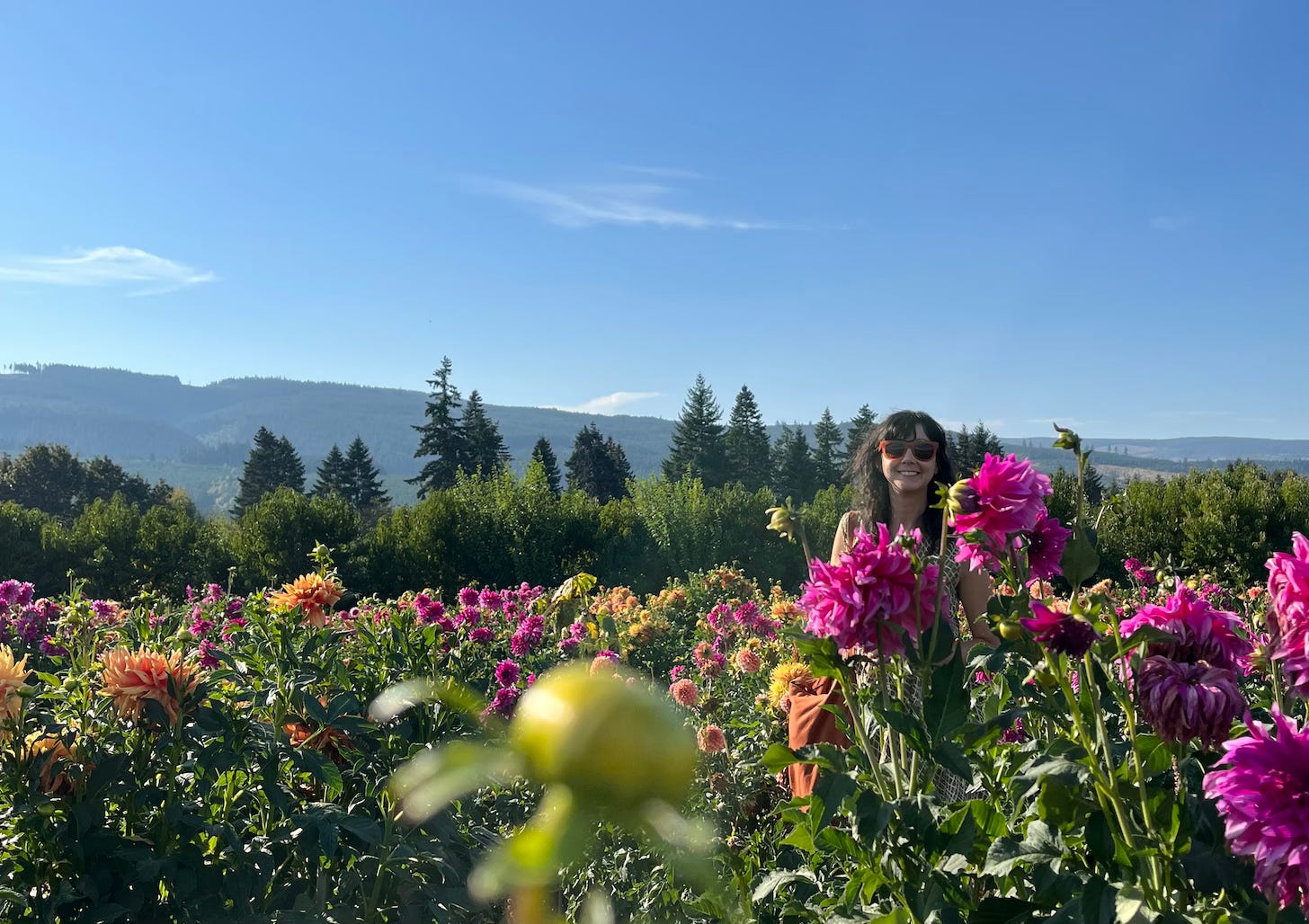
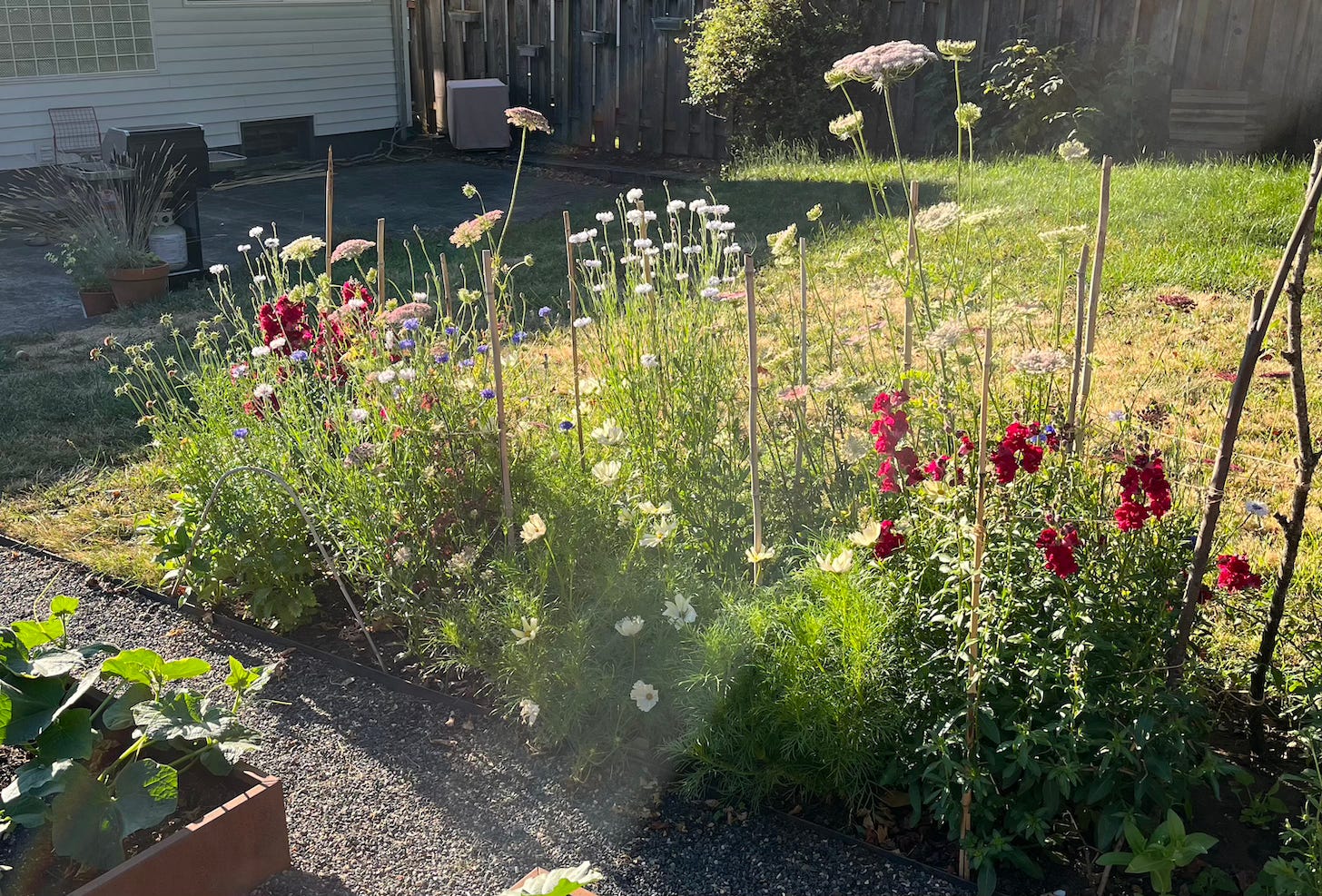

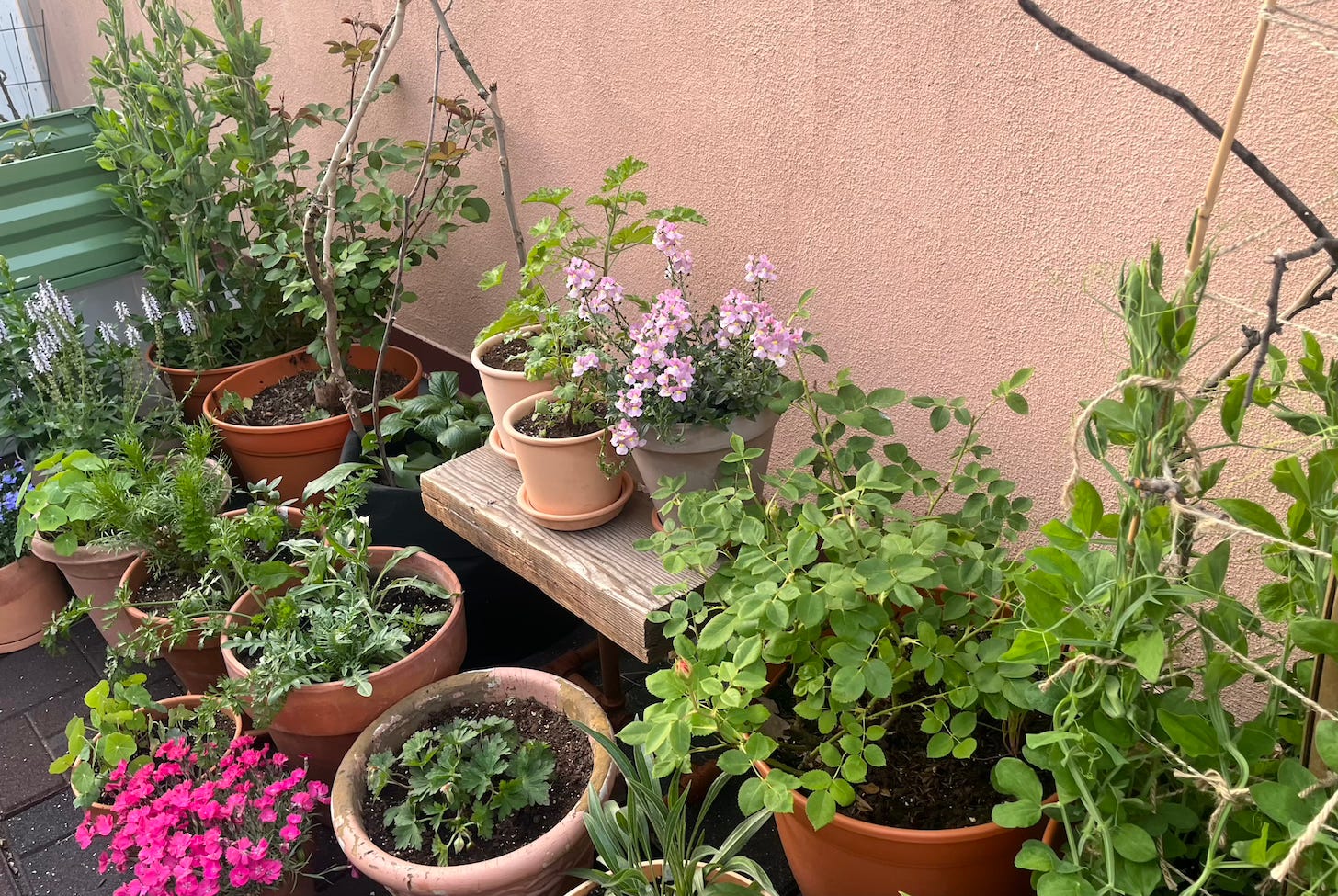

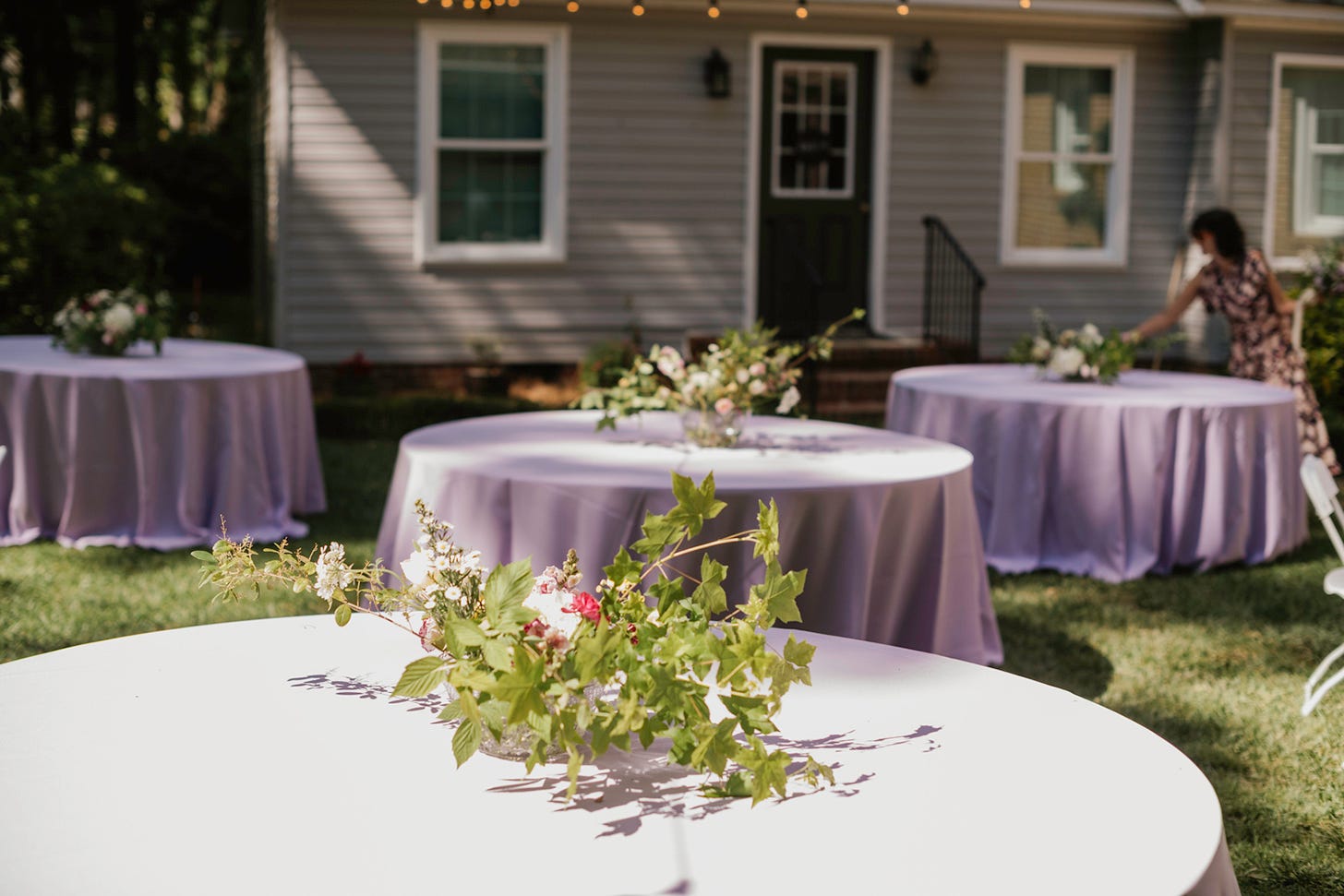
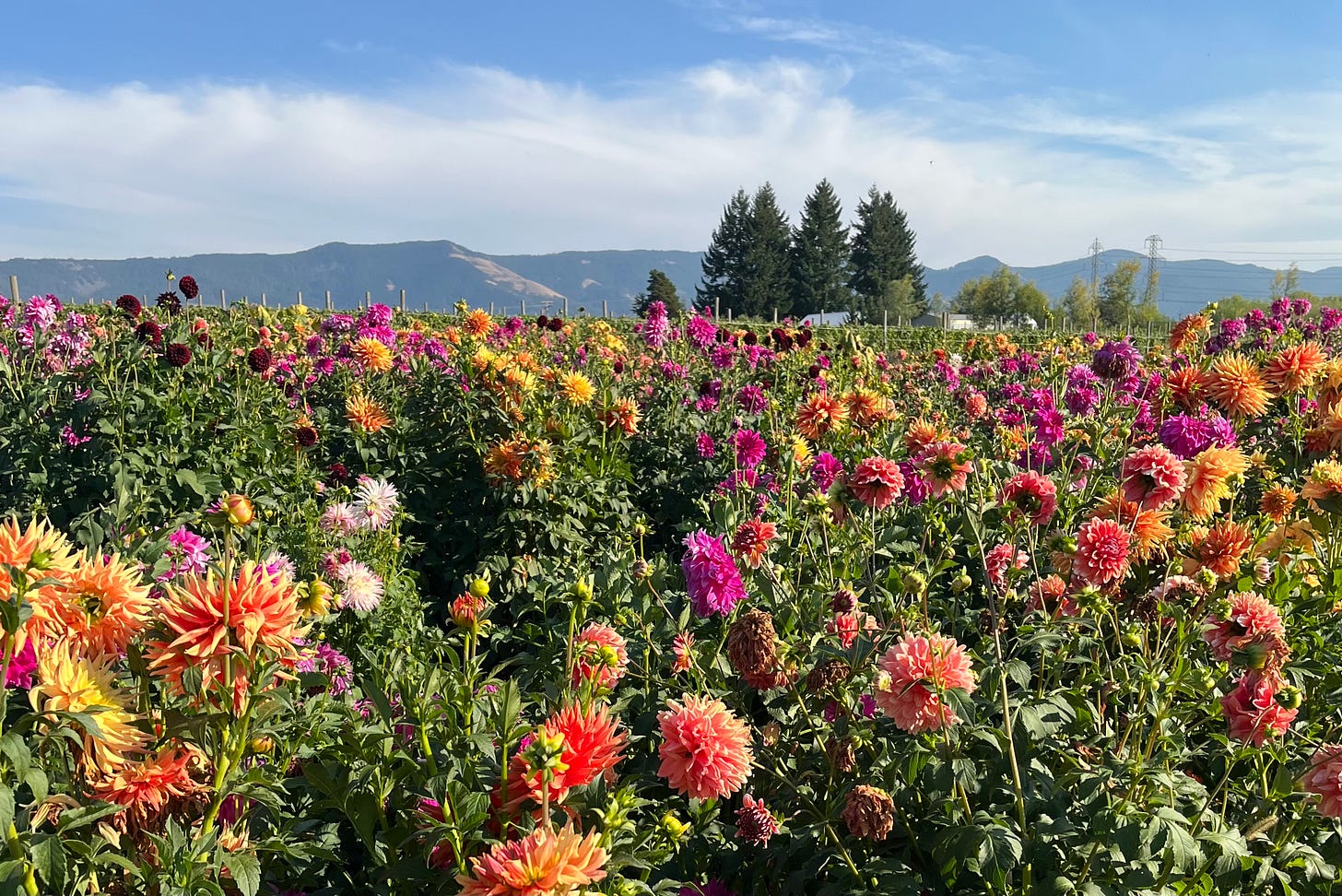

I totally relate to this - Floret was one of the things that gave me a push to start trying to seriously grow flowers, but I definitely went off the deep end and started keeping all these careful notes of everything I was doing and only growing one kind of certain things so they didn't cross pollinate...for what haha. I think when you really like doing something and someone shows you that it can be a viable business, it makes you think that you suddenly have to do that, or at least I think that! Trying now to remember it's all for fun, and I like experimenting and surprises, so I don't need to be so worried about carefully planned outcomes. I put myself under so much pressure!
Loved this! Do you follow Arthur Parkinson? I am sure you do but he has great tips for containers gardens. Also he is not bad to look at 🤣😉